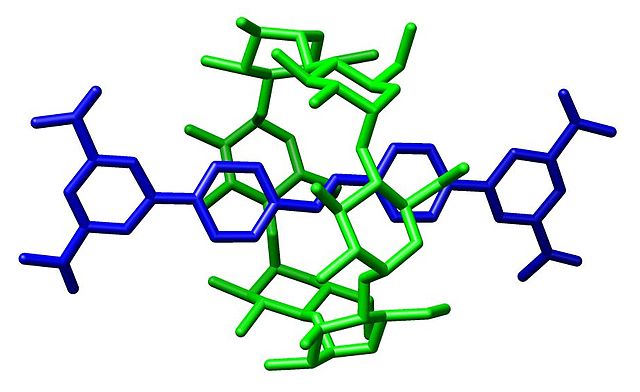Molecular electronics is the study and application of molecular building blocks for the fabrication of electronic components. It is an interdisciplinary area that spans physics, chemistry, and materials science. The unifying feature is use of molecular building blocks to fabricate electronic components. Due to the prospect of size reduction in electronics offered by molecular-level control of properties, molecular electronics has generated much excitement. It provides a potential means to extend Moore's Law beyond the foreseen limits of small-scale conventional silicon integrated circuits.
Graphical representation of a rotaxane, useful as a molecular switch
A rotaxane is a mechanically interlocked molecular architecture consisting of a dumbbell-shaped molecule which is threaded through a macrocycle. The two components of a rotaxane are kinetically trapped since the ends of the dumbbell are larger than the internal diameter of the ring and prevent dissociation (unthreading) of the components since this would require significant distortion of the covalent bonds.
Graphical representation of a rotaxane
(a) A rotaxane is formed from an open ring (R1) with a flexible hinge and a dumbbell-shaped DNA origami structure (D1). The hinge of the ring consists of a series of strand crossovers into which additional thymines are inserted to provide higher flexibility. Ring and axis subunits are first connected and positioned with respect to each other using 18 nucleotide long, complementary sticky ends 33 nm away from the center of the axis (blue regions). The ring is then closed around the dumbbell axis using closing strands (red), followed by the addition of release strands that separate dumbbell from ring via toehold-mediated strand displacement. (b) 3D models and corresponding averaged
Structure of a rotaxane with an α-cyclodextrin macrocycle.



